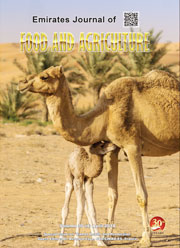TYPOLOGY OF CAMEL FARMING SYSTEM IN SAUDI ARABIA
DOI:
https://doi.org/10.9755/ejfa.v25i4.15491Keywords:
Camel, Farming system, Saudi Arabia, TypologyAbstract
A field survey involving 218 camel farmers from the northern, eastern and central part of Kingdom of Saudi Arabia was implemented in order to collect data on the status of the owner, herd composition and characteristics, feeding practices, moving strategies and disease prevention practices. The method used was Ascending Hierarchical Clustering, a well-adapted technique in case of exploratory approach. After automatic classification analysis of four groups of variables describing the farmer, its herd, some of its practices and the disease prevention practices, a final analysis regarding the clusters of these four items, allowed to identify 4 global types of farming systems with 2 sub-types in each main type. The explaining factors allowed distinguishing camel farms linked to the desert life in opposition to urban people having multi-activity. However, the integration to market could be variable whatever the opposition desert/city. A part of the people living in desert could improve their management and some of the urban owners have camel mainly for social aspect.










 .
. 